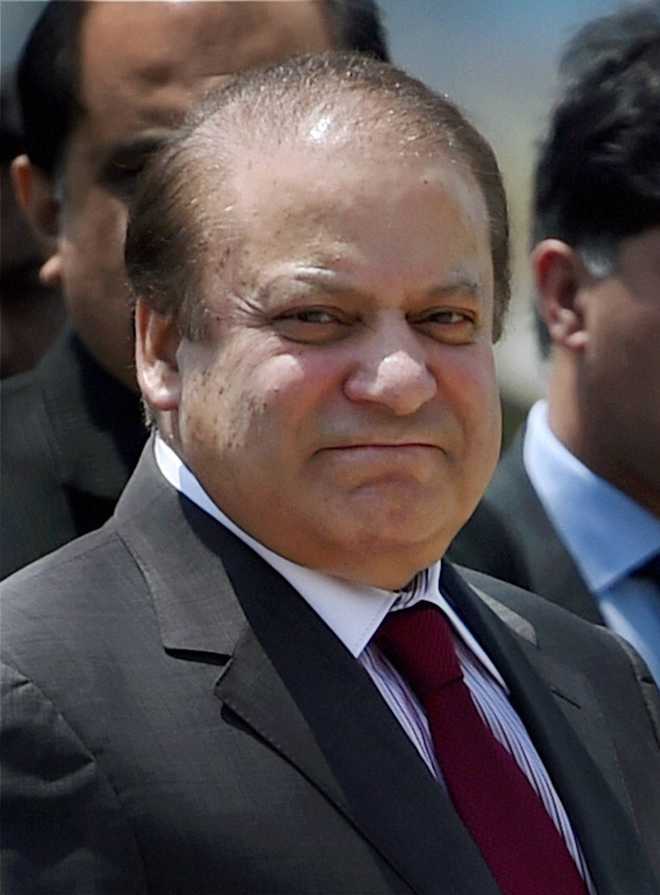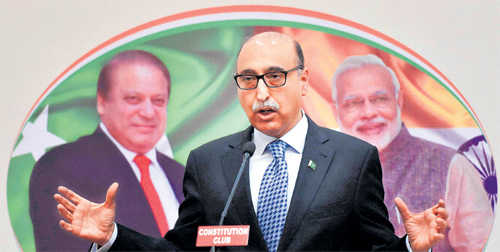The US is stuck in Afghanistan for the past 15 years because it’s reluctant to target terror groups in Pakistan, writes BRAHMA CHELLANEY
RESEARCH SHOWS THAT MILITANT GROUPS ARE GENERALLY RESILIENT TO THE LOSS OF A TOP LEADER, UNLESS THEIR CROSSBORDER SANCTUARIES ARE SYSTEMATICALLY TARGETED
Despite the worsening Afghanistan quagmire, this month’s 15th anniversary of the longest war in American history attracted little attention. The raging battles highlight United States President Barack Obama’s failed strategy to wind down the war. The Afghanistan situation today is worse than at any time since 2001, when the US invasion helped oust the Taliban from power, forcing them to set up their command-and-control structure in Pakistan, their creator and steadfast sponsor.
 REUTERSA US has not designated the Afghan Taliban as a terrorist organisation. The Obama White House has engaged in semantic jugglery as to why the group is missing from the US list of foreign terrorist organisations
REUTERSA US has not designated the Afghan Taliban as a terrorist organisation. The Obama White House has engaged in semantic jugglery as to why the group is missing from the US list of foreign terrorist organisations
Now the resurgent Taliban hold more Afghan territory than before, the civilian toll is at a record high, and Afghan military casualties are rising to a level that American commanders warn is unsustainable. From sanctuaries in Pakistan and from the Afghan areas they hold, the militants are carrying out increasingly daring attacks, including in the capital Kabul, as illustrated by the recent strikes on the American University and a site adjacent to the defence ministry and presidential palace.
In declaring war in Afghanistan on September 21, 2001, after the world’s worst terrorist attack in modern history 10 days earlier in the US, President George W Bush explained why 9/11 was a turning point for the country: “Americans have known wars — but for the past 136 years, they have been wars on foreign soil, except for one Sunday in 1941 [Pearl Harbour]. Americans have known the casualties of war — but not at the centre of a great city on a peaceful morning. Americans have known surprise attacks — but never before on thousands of civilians. All of this was brought upon us in a single day…”
Yet before he could accomplish his war objectives in Afghanistan, Bush invaded and occupied Iraq — one of the greatest and most-calamitous military misadventures in modern history that destabilised West Asia and fuelled Islamist terrorism.
Obama came to office with the pledge to end the Bush-era wars in Afghanistan and Iraq. In Iraq, he ended the Bush war, only to start a new war in the Syria-Iraq belt.
In Afghanistan, Obama thought he could end the war simply by declaring it over. This is what he did in December 2014, when he famously declared that the war “is coming to a responsible conclusion.” But the Afghan Taliban had little interest in peace, despite Washington allowing them to set up a de facto diplomatic mission in Qatar and then trading five senior Taliban leaders jailed at Guantánamo Bay for a captured US Army sergeant.
The result is that Obama repeatedly has had to change his plans in Afghanistan. In July 2011, he declared that by 2014 “the Afghan people will be responsible for their own security”, adding seven months later that, “By the end of next year, our war in Afghanistan will be over”. Just two months ago, however, he decided to keep 8,400 US troops in Afghanistan indefinitely and leave any withdrawal decision to his successor. Some 26,000 American military contractors also remain in Afghanistan.
Why is the US still stuck in the war? In large part, it is because it has fought the war on just one side of the Afghanistan-Pakistan divide and been reluctant to go after the Pakistan-based sanctuaries of the Afghan Taliban and its affiliate, the Haqqani network. The US assassination of Afghan Taliban chief Akhtar Mohammad Mansour in May by a drone strike inside Pakistani territory was a rare exception — a one-off decapitation attack that did little to change the military realities on the ground.
Research shows that militant groups are generally resilient to the loss of a top leader, unless their cross-border sanctuaries are systematically targeted. Indeed, decapitation can help a militant group to rally grassroots support in its favour and against the side that did the killing. No counterterrorism campaign has ever succeeded when the militants have enjoyed cross-border havens.
Although Obama hailed Mansour’s killing as “an important milestone”, the decapitation cast an unflattering light on US policy: America took nearly 15 years to carry out its first drone strike in Pakistan’s Balochistan province, the seat of the Afghan Taliban’s command-and-control structure. The US military has failed to disrupt the Haqqani network because Pakistan has moved the group’s leadership from FATA to safe houses in its major cities, while allowing the Afghan Taliban leadership to stay ensconced in Balochistan.
Tellingly, the US has not designated the Afghan Taliban as a terrorist organisation. The Obama White House indeed has engaged in semantic jugglery to explain why the group is missing from the US list of foreign terrorist organisations. In truth, the US is willing to accommodate the medieval Taliban in a power-sharing arrangement in Afghanistan. It assassinated Mansour because he defiantly refused to revive peace negotiations.
For almost eight years, Obama has pursued the same Afghanistan-related strategy, changing just the tactics. His strategy essentially has sought to use inducements to coax the Pakistani military and its rogue Inter-Services Intelligence agency to go after the Haqqani network and get the Afghan Taliban to agree to a peace deal. The inducements have ranged from billions of dollars in aid to the supply of lethal weapons that could eventually be used against India. The carrots-without-sticks approach has only emboldened the Pakistani military to run with the hare and hunt with the hounds.
With the Afghan government’s hold on many districts looking increasingly tenuous, Obama’s successor will have to make some difficult choices by facing up to a stark truth: The war in Afghanistan can only be won in Pakistan.


































































































































